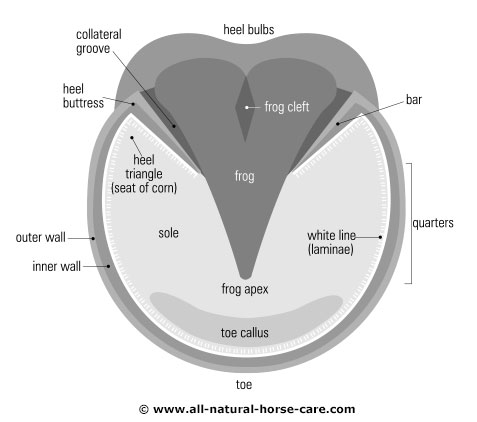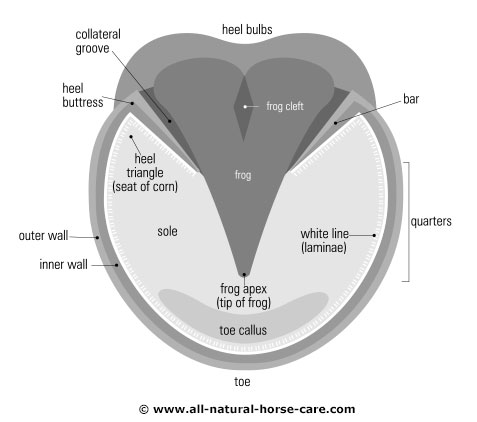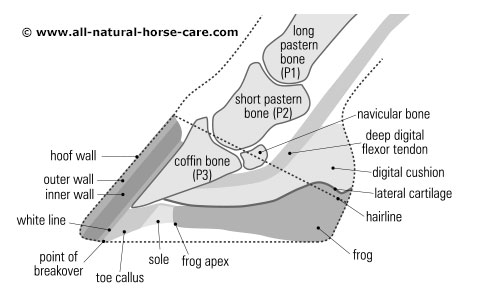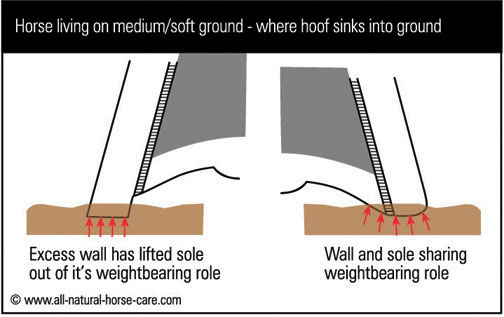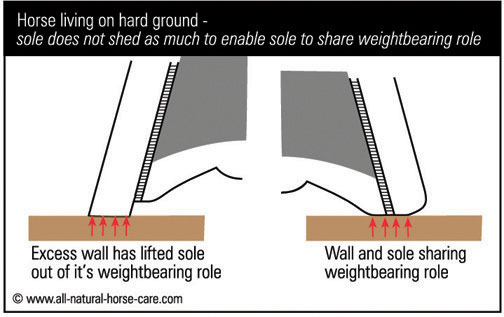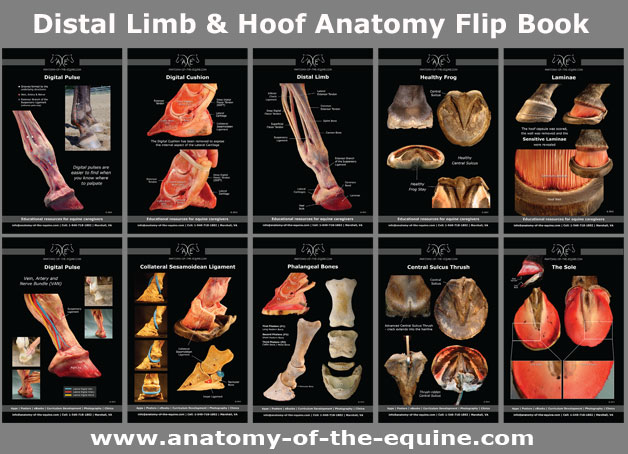Barefoot hoof diagrams
Below are some barefoot hoof diagrams to give you an idea of what the shape of the "ideal" hoof should look like. The parts of the hoof are labelled for reference.
Note: Healthy hooves can vary depending on the environment the horse is living in and the terrain they regularly encounter.
Sole view of a front hoof
Note the following points:
- Wide, fat frog.
- Tight white line.
- Strong, thick hoof walls - with the inner wall being thicker.
- Bars end approximately halfway down the frog.
- The heel buttresses are back towards the rear of the frog.
- The hoof ratio is 65:35 (from the rear of the hoof to the widest point; and from the widest point to the break over).
More Barefoot Hoof Diagrams: Side view of the hoof capsule
Weightbearing - the true role of the wall and sole
Contrary to popular belief, the hoof wall should not be the only structure to bear the weight of the horse. When only the wall is loaded it is referred to as peripheral loading and it puts way too much stress on the laminar connection and has a dramatic effect on the blood supply to the hoof.
Dr Robert Bowker VMD, PhD recently did research on this and found that on a:
- correctly trimmed bare foot hoof: blood flow continues between heartbeats
- shod foot: blood stops between heartbeats and blood does not reach small blood vessels in the hoof
- laminitic foot: blood stops and backs up between heartbeats
The diagrams below show the difference between a hoof that is trimmed so that it is peripherally loaded (images on the left) compared to hoof that is trimmed to avoid peripheral loading (images on right) which allows both the wall and the sole to bear weight.
View more barefoot hoof diagrams here:
